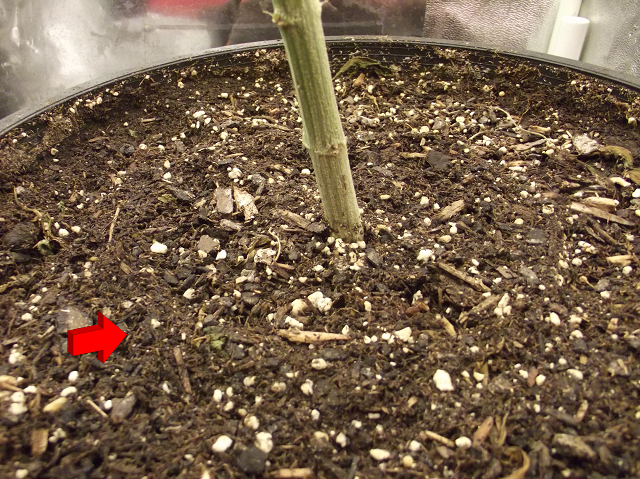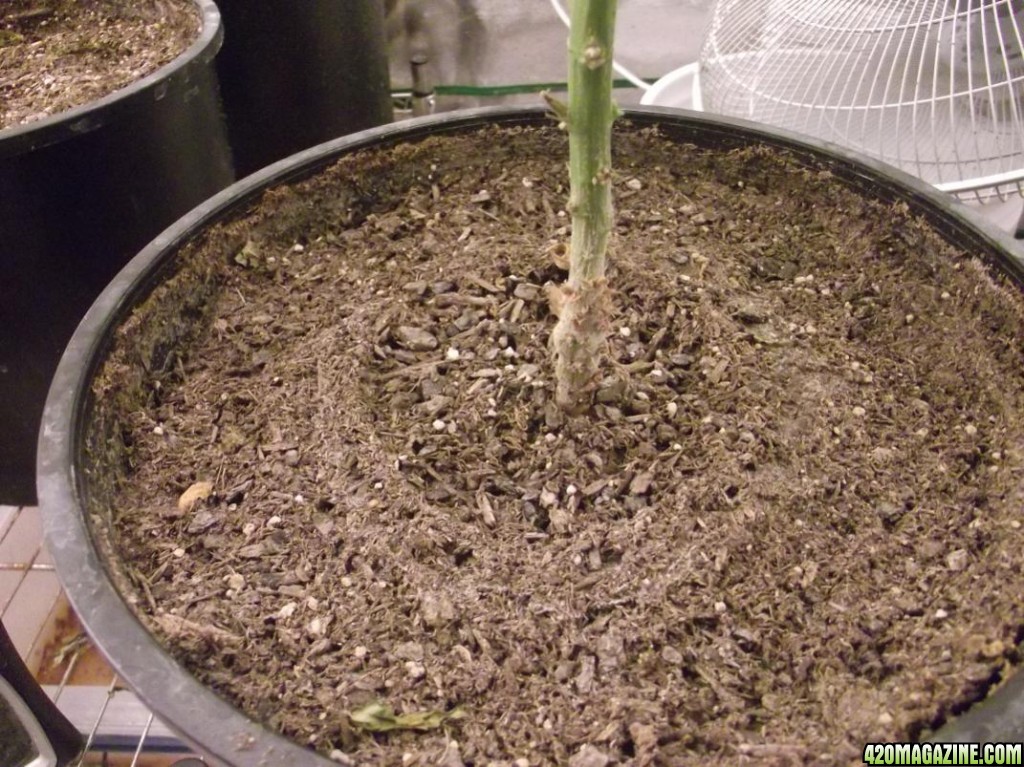- Thread starter
- #441
Emilya Green
Well-Known Member
even if you could nudge them a bit to get an idea of the weight.... but short of that and a meter with probes long enough to get to where you want to measure, you could try the old dowel rod dipstick trick... any soft wood will pick up enough moisture that you can use it to tell where the wet dry line... just know that the idea of a wet/dry line in a hard sided container becomes a wet/dry center core surrounded with drying soil all around.
There are beginner electronic circuits that can be easily built that can accurately gauge conductance, and it wouldn't take a lot to install a sensor or two that could give you an indication of the core moisture automatically. I can easily see how a sensor placed immediately below the old rootball on a transplant might be very useful as well as one midway toward the wall of the container. I might look into something along these lines on my next grow journal because under a large SCROG screen and in 10 gallon cloth bags, I will be looking at a similar problem as yours and looking for a way to solve it.
Once flowering starts it is time to change strategies when it comes to watering. It is then time to see what the roots you have been carefully cultivating in veg can do, and then it is appropriate to see how much water the plants are taking in on average per day, and then give them that, watering slowly just to the point of runoff each day or at least every other day while carefully monitoring how much it takes to get there. If the amount it takes to get to this point goes up each time you water, and it should during stretch, then you are giving the right amount. If it goes down, you are waterlogging the plant and you are watering too often and need to add a day to your cycle. Not everyone can develop roots capable of a 1 or 2 day cycle during flower, but in order to get the most water and/or the most nutes into the plant while it is building buds, this subtle change in the watering cycle is how to accomplish it.
There are beginner electronic circuits that can be easily built that can accurately gauge conductance, and it wouldn't take a lot to install a sensor or two that could give you an indication of the core moisture automatically. I can easily see how a sensor placed immediately below the old rootball on a transplant might be very useful as well as one midway toward the wall of the container. I might look into something along these lines on my next grow journal because under a large SCROG screen and in 10 gallon cloth bags, I will be looking at a similar problem as yours and looking for a way to solve it.
Once flowering starts it is time to change strategies when it comes to watering. It is then time to see what the roots you have been carefully cultivating in veg can do, and then it is appropriate to see how much water the plants are taking in on average per day, and then give them that, watering slowly just to the point of runoff each day or at least every other day while carefully monitoring how much it takes to get there. If the amount it takes to get to this point goes up each time you water, and it should during stretch, then you are giving the right amount. If it goes down, you are waterlogging the plant and you are watering too often and need to add a day to your cycle. Not everyone can develop roots capable of a 1 or 2 day cycle during flower, but in order to get the most water and/or the most nutes into the plant while it is building buds, this subtle change in the watering cycle is how to accomplish it.







